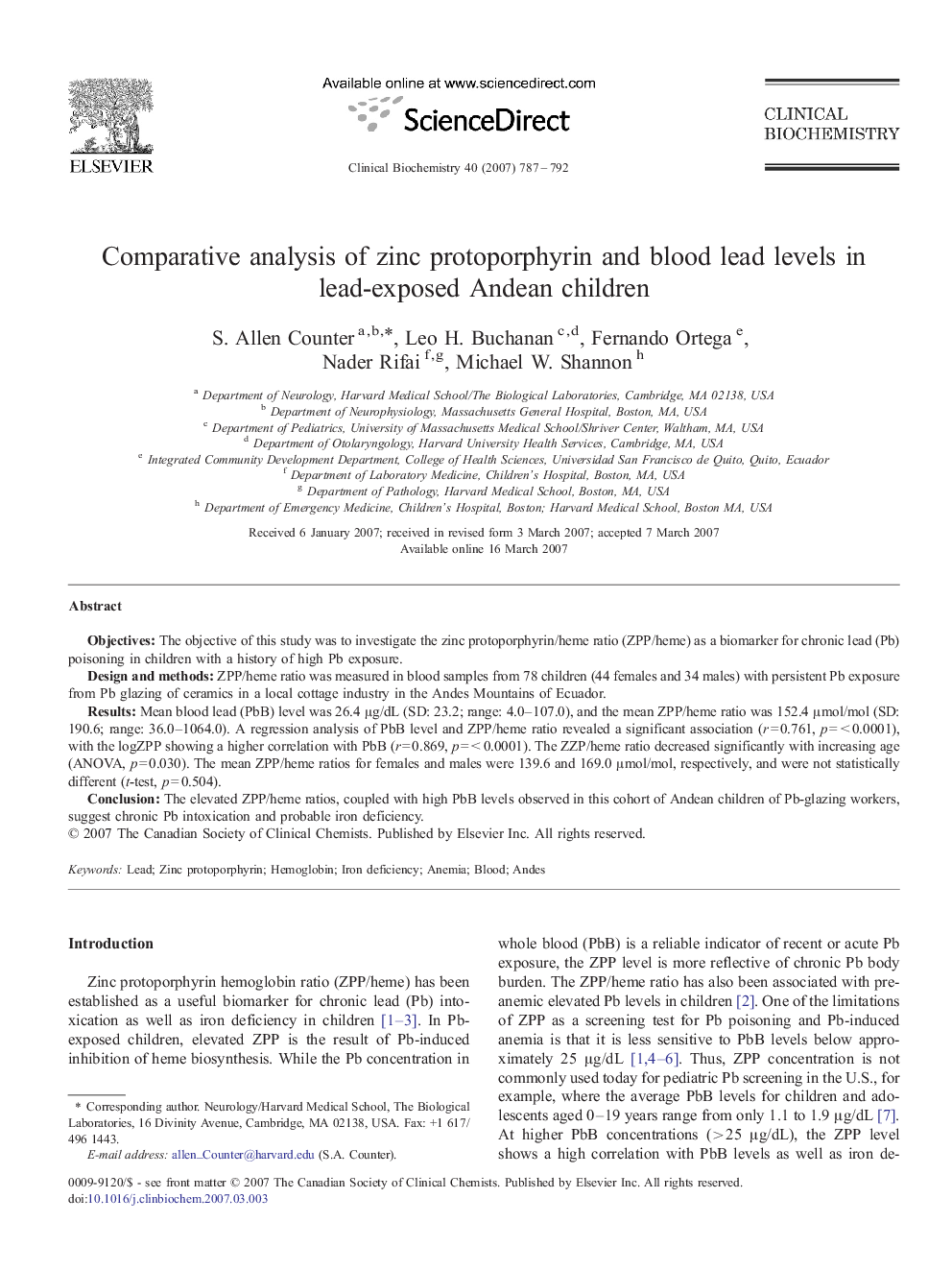| Article ID | Journal | Published Year | Pages | File Type |
|---|---|---|---|---|
| 1971582 | Clinical Biochemistry | 2007 | 6 Pages |
Objectives:The objective of this study was to investigate the zinc protoporphyrin/heme ratio (ZPP/heme) as a biomarker for chronic lead (Pb) poisoning in children with a history of high Pb exposure.Design and methods:ZPP/heme ratio was measured in blood samples from 78 children (44 females and 34 males) with persistent Pb exposure from Pb glazing of ceramics in a local cottage industry in the Andes Mountains of Ecuador.Results:Mean blood lead (PbB) level was 26.4 μg/dL (SD: 23.2; range: 4.0–107.0), and the mean ZPP/heme ratio was 152.4 μmol/mol (SD: 190.6; range: 36.0–1064.0). A regression analysis of PbB level and ZPP/heme ratio revealed a significant association (r = 0.761, p = < 0.0001), with the logZPP showing a higher correlation with PbB (r = 0.869, p = < 0.0001). The ZZP/heme ratio decreased significantly with increasing age (ANOVA, p = 0.030). The mean ZPP/heme ratios for females and males were 139.6 and 169.0 μmol/mol, respectively, and were not statistically different (t-test, p = 0.504).Conclusion:The elevated ZPP/heme ratios, coupled with high PbB levels observed in this cohort of Andean children of Pb-glazing workers, suggest chronic Pb intoxication and probable iron deficiency.
